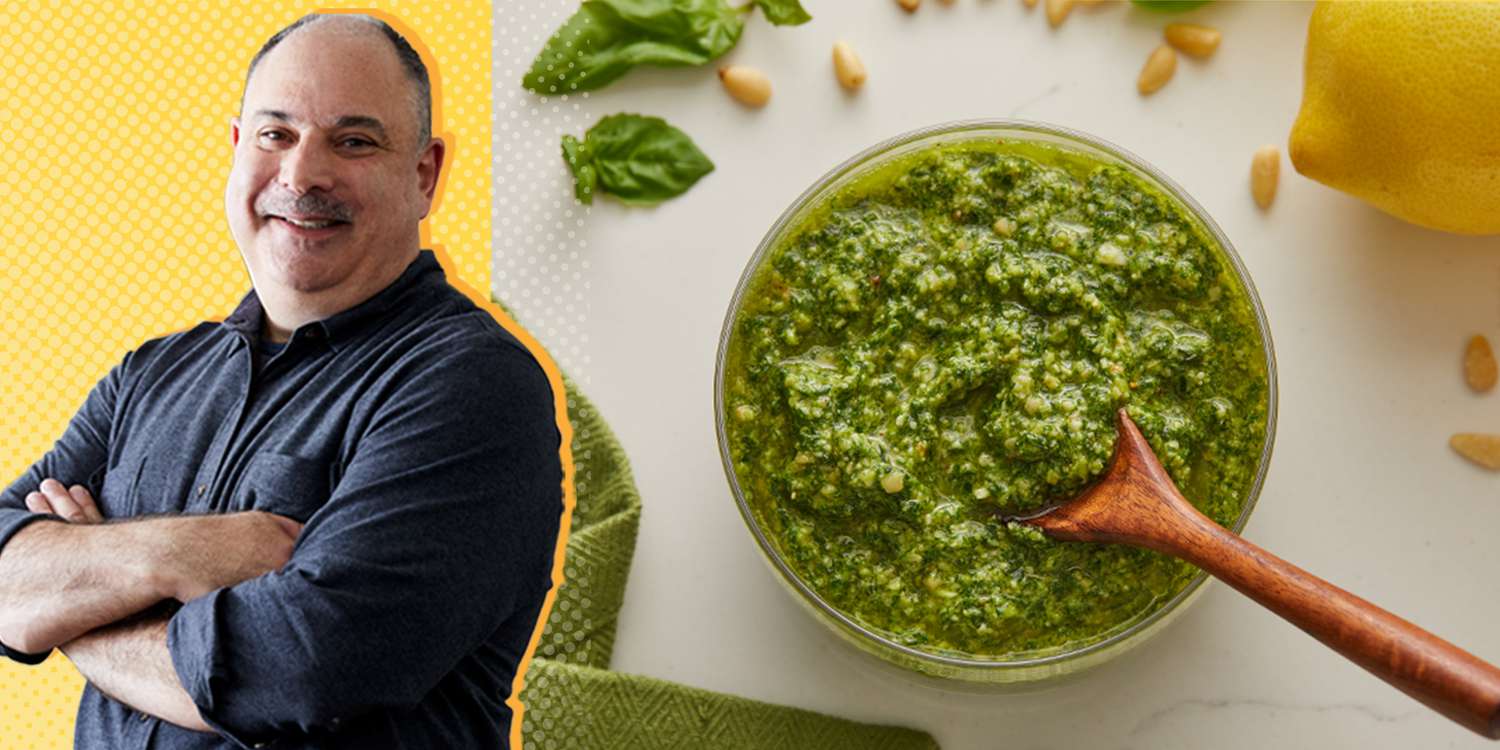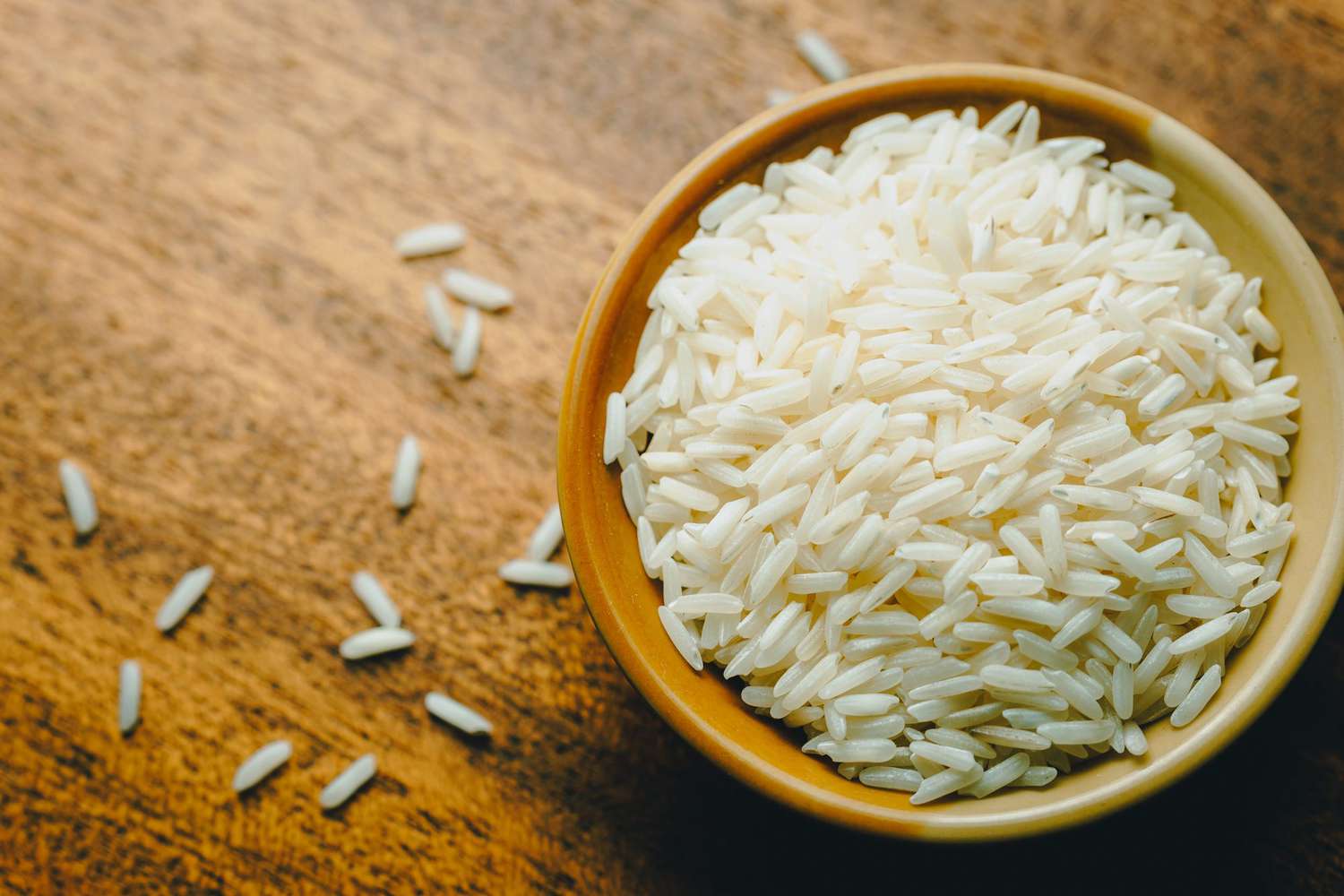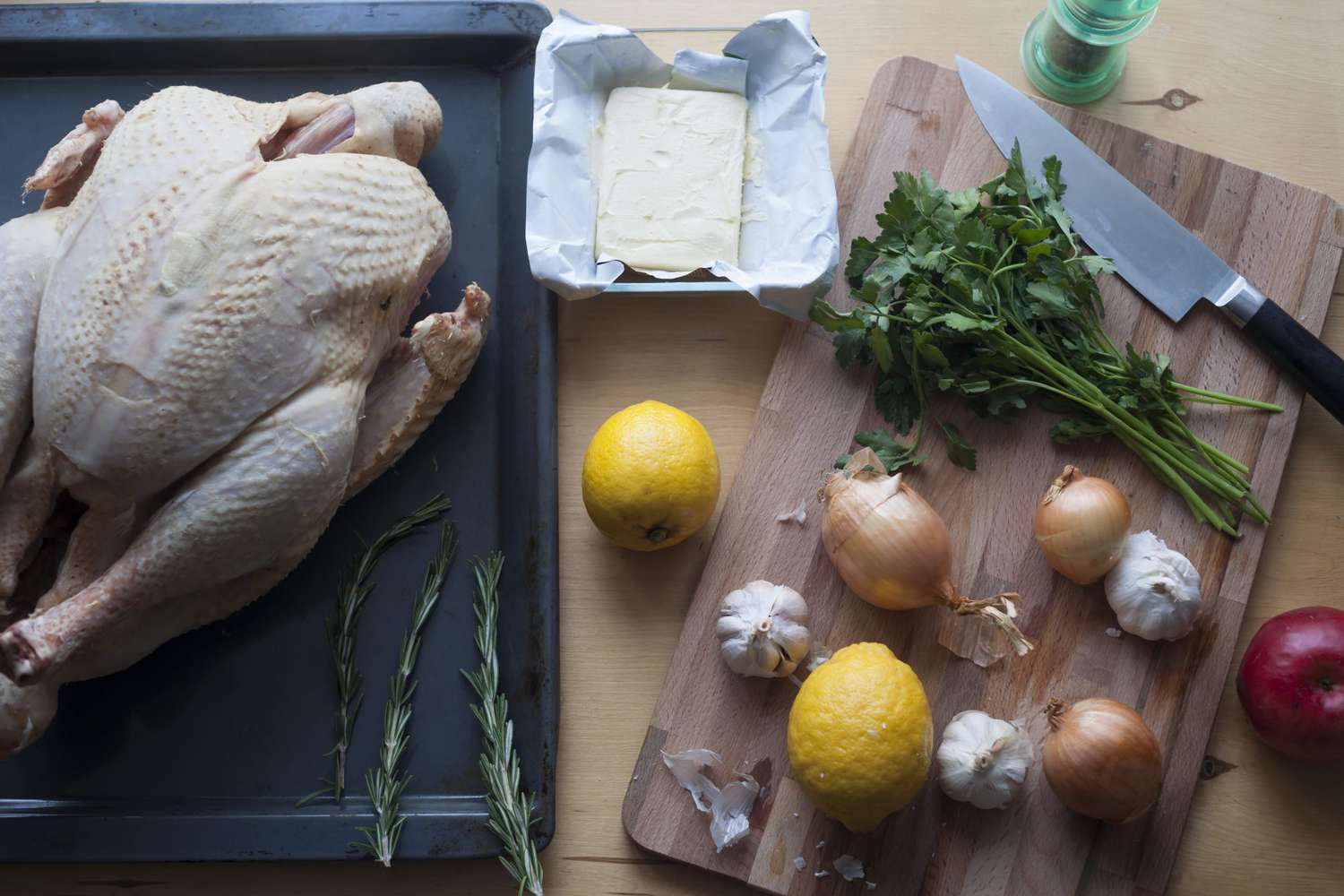When you think of pesto, a bright green sauce may jump to the forefront of your mind. Pesto Genovese with its vibrant green hue courtesy of a generous dose of basil may be the most popular version globally, but it’s certainly not the only pesto out there.
The word pesto comes from the Italian word “pestare” meaning “pound” or “crush,” referring to the traditional way the sauce is prepared by grinding ingredients together with a mortar and pestle. One of the many pesto variations is Pesto alla Trapanese, a Sicilian pesto that features bright, sweet cherry tomatoes. (Not to be confused with pesto rosso, which is made with sun-dried tomatoes.) And in summer when tomatoes are at their peak, Pesto alla Trapanese is Chef John’s go-to no-cook sauce.
Pasta alla Trapanese shares many components of the sauce with pesto Genovese. Both feature basil, olive oil, garlic, cheese, and nuts. However, the pine nuts typically found in green pesto are swapped for almonds in pesto Trapanese, and summer-fresh tomatoes are added, giving the sauce a light, bright taste. In many recipes, including Chef John’s, you have the option of adding a few mint leaves as well.
How to Make Tomato Pesto Pasta alla Trapanese
While this red pesto is simple to make—as you essentially just combine all ingredients together in a blender—there are a few steps you can take to make a better pesto experience.
First, start with blanched almonds. You can buy blanched almonds at the store, or do it yourself at home by soaking whole almonds in boiling water for a few minutes. After the almonds have soaked for a few minutes and they’ve cooled to the touch, you can easily slip the almond from its papery skin, as Chef John describes in his recipe video.
After blanching the almonds and setting them aside, it’s time to make a garlic paste. Crush sliced garlic and kosher salt using a mortar and pestle, or place sliced garlic on a cutting board, sprinkle it with kosher salt, and use the flat side of a chef’s knife to flatten and scrape the garlic-salt mixture until it’s a smooth paste. While you’d traditionally build your entire pesto in a large mortar and pestle, Chef John believes it’s only truly necessary to prepare garlic with this tool.
Once your garlic is prepared, transfer almonds, Pecorino Romano, basil, mint, garlic paste, olive oil, and tomatoes to your blender. Per Chef John, it’s important to add the ingredients to the blender in that order, so the almonds and cheese can begin grinding first before combining with the remaining ingredients. Pulse blender until almonds and cheese combine, then continue pulsing until all ingredients are incorporated. Once the ingredients are all incorporated, you can blend on high until the pesto has reached your desired level of smoothness. Once the pesto is blended, add salt to taste.
After you’ve finished making your pesto, prepare the pasta of your choice. Transfer the cooked pasta to a bowl and add in about 1/3 cup of pasta cooking water to the bowl along with the sauce. Toss everything together (the starchy pasta water will emulsify the pesto sauce and help it cling to the pasta) and dig in.
If you’re hesitant to try this pesto, let Allrecipes users convince you. One member said, “Delicious! Our garden is popping off with cherry tomatoes and basil right now so this was a perfect use of our fresh produce. I used this to sauce a homemade white pan pizza after it came out of the oven. Everyone loved it and we had enough leftover pesto to send home with our friends. I’d post a photo, but the food was gone after a few minutes.” User SpaceCadet65 said, “I made this for my wife who is hugely picky. She said it was the best thing I’ve ever made for her.” We’re convinced!




